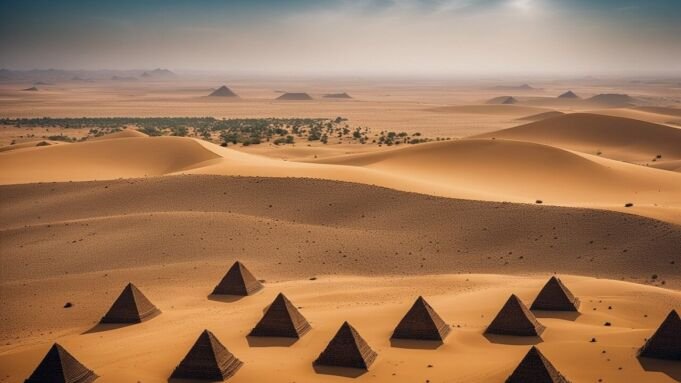Have you ever wondered what makes Sudan so unique? This North African country is home to over 40 million people and is Africa’s third-largest country. Sudan is a country that is steeped in rich history, vibrant culture, and diverse landscapes. In this article, I will share ten interesting facts about Sudan that will leave you fascinated and wanting to learn more.
Did you know that Sudan is the world’s largest producer of Arabic gum? This natural gum is used in various products, from food and beverages to cosmetics and pharmaceuticals. Sudan is also home to the ancient Kingdom of Kush, one of Africa’s earliest civilizations. The Kingdom of Kush was famous for its gold mines and trade routes extending across the Red Sea to Arabia and India.
If you’re interested in learning more about Sudan, you’ve come to the right place. In this article, you’ll learn fascinating facts about Sudan. There’s much to know about Sudan, from its diverse landscapes to its ancient civilizations. So, keep reading to learn more about this incredible country.
1. The Confluence of Civilizations
In northeastern Africa, Sudan boasts a mix of cultures and a long history. The country has hosted civilizations like the Nubian and Arabic. Its strategic spot made it a trade and cultural hub for ages. Where the Blue Nile and White Nile meet symbolizes Sudan’s history and cultural mix.
Early on, around 2500 BC, the Nubian civilization emerged as one of Africa’s first. Three Kushite kingdoms reigned in the area from the 8th century BC to the 4th century AD. In Sudan, the Kush kingdom is famous for its culture and architecture, including over 200 pyramids.
Arabic influence began in the 8th century, becoming a core part of Sudanese identity. The country celebrates a variety of languages, with Arabic as the official one. This language significantly shapes Sudanese culture and is a key Arabic dialect.
Sudan also features unique biodiversity, with species exclusive to its terrain. Sanganeb Marine National Park in the Red Sea offers a habitat for sharks, dolphins, and sea turtles, attracting divers and snorkelers.
Flowing through Sudan, the Nile River has been crucial to its culture and history. In Khartoum, the Blue Nile and White Nile join, providing sustenance and inspiration for Sudanese communities.
Read: Top 10 Poorest Countries in the World
2. A Land Rich in Pyramids
Sudan boasts over 200 pyramids, twice as many as Egypt. These structures, mostly in ancient Meroe, mark the Kingdom of Kush’s capital. Built in the 8th century by Nubians, these pyramids served as royal tombs.
Though smaller than Egypt’s, Sudan’s pyramids are impressive in their architecture. Kings and queens of Kush rested in these granite and sandstone tombs adorned with carvings and paintings.
Three groups categorize these pyramids: North, South, and West. The North, featuring Meroe’s pyramids, is the largest. Nuri’s South Group houses King Taharqa’s tomb, while the West Group, with El Kurru’s pyramids, includes King Tanwetamani’s resting place.
These structures highlight Nubian culture and history, drawing global visitors to Sudan’s heritage.
3. The Birthplace of Ancient Iron Technology
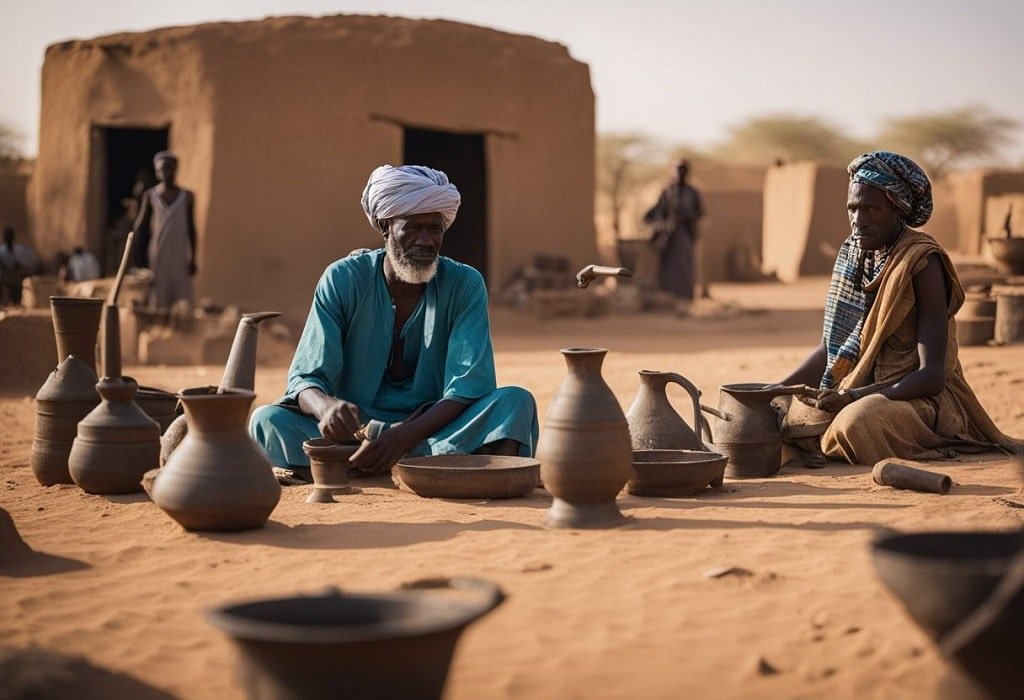
Sudan originated ancient iron technology. In the ancient world, Meroe, now in Sudan, stood as a dominant civilization, excelling in iron making for weapons, tools, and more, thanks to the region’s rich iron ore.
The Kingdom of Kush, ruling Sudan from the 8th century BC to the 4th century AD, mastered iron production, too. They traded iron goods and crafted intricate art pieces.
Iron technology was key to these civilizations’ achievements. It produced superior weapons and tools for agriculture, building, and other vital activities.
Sudan remains rich in iron ore. Its mining sector flourishes, extracting iron and other minerals, continuing a tradition that shapes its economy and culture today.
Read: Top 10 Happiest Countries in the World
4. A Tapestry of Languages
Sudan showcases a vast linguistic diversity, with 114 native languages and over 500 unique accents. As the official language, Sudan’s varied cultures widely speak and influence Arabic. Sudanese Arabic, enriched by local languages like Nubian, Beja, and Fur, stands out.
Besides Arabic, numerous languages thrive in Sudan, including Nubian, Beja, Fur, and Dinka, each vital to the nation’s cultural identity. The country’s tribes, such as the Dinka in the south and the Nuba, Beja, and Fur tribes, contribute to this linguistic richness.
Sudan’s language variety reflects its rich cultural past and the resilience of its people. Amidst diversity, Sudanese find unity in music, dance, and food, weaving a vibrant cultural fabric worth celebrating.
5. Unique Biodiversity Hotspots
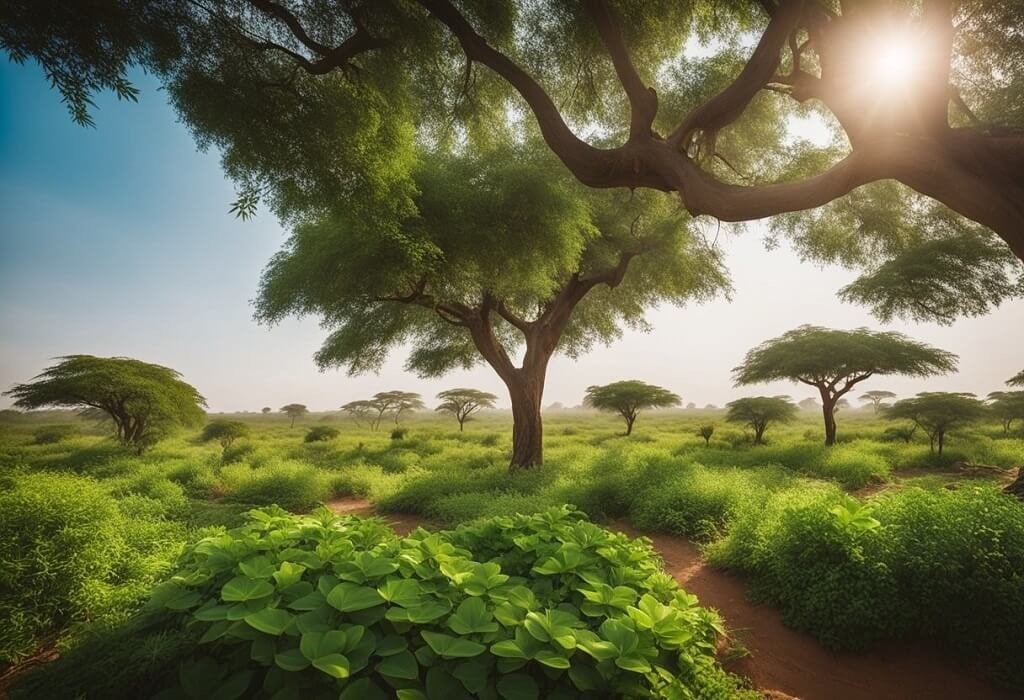
Sudan hosts unique biodiversity hotspots, including the Sanganeb Marine National Park in the Red Sea. This park dazzles with its variety of corals, fish, sea turtles, and shipwrecks, attracting divers worldwide.
Another notable area is Dinder National Park in the southeast, home to antelopes, giraffes, migratory birds, lions, and hyenas, showcasing diverse wildlife.
Additionally, Sudan boasts other national parks like Radom and Jebel Elba, which are celebrated for their distinct flora and fauna. These parks offer a glimpse into Sudan’s rich natural landscape.
6. The Ancient Kingdom of Kush
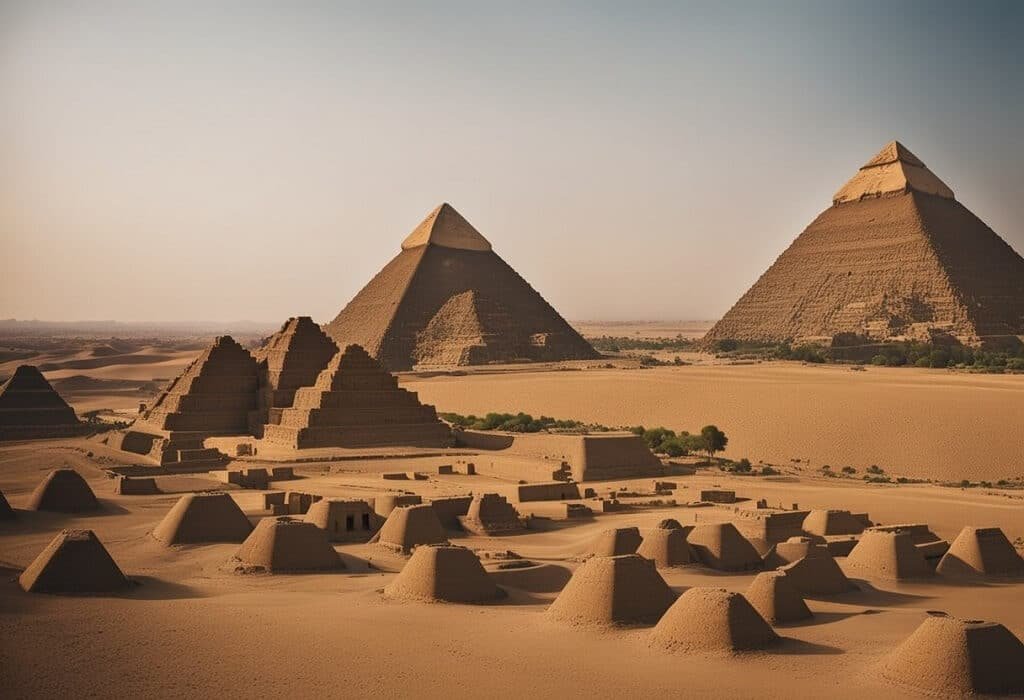
In today’s northern Sudan, Sudan boasts one of Africa’s oldest civilizations, the Kingdom of Kush. The area around Kush saw early habitation around 8000 BCE, with the kingdom emerging much later.
Named after Kerma city, the Kerma Culture dates back to 2500 BCE, showing trade and marriage ties with Egyptians. Nubians, known as skilled archers or “Ta-Seti” (Land of the Bow), were central to this interaction.
Dominating the Nile Valley for over a millennium, Kush had three periods, from 2500 BCE to 350 CE, centered around Kerma, Napata, and Meroe.
Kush was renowned for ironworking, gold mining, and agriculture, and its pyramids served as royal tombs. Although smaller, these pyramids rival Egypt’s grandeur.
Conquered by Axum in the 4th century CE, Kush’s influence persists in Sudan. Nubians, Kush’s descendants, maintain their heritage with pride.
Read: A Culinary Journey of Lebanese Food
7. A Crucial Trade Hub in Antiquity
Since ancient times, Sudan has been a pivotal trade center. Its location fostered a blend of cultures, languages, and religions, highlighting the roles of Nubian, Arabic, and Gum Arabic in its history.
Nubia, along the Nile, stands as one of Sudan’s earliest civilizations, with Nubians excelling in metalwork, pottery, and farming. They engaged in trade with ancient Egyptians and other Nile civilizations.
Introduced by Arab traders and settlers, Arabic became Sudan’s official language, deeply influencing its culture.
Gum Arabic, harvested from acacia trees, has long been a significant Sudanese export, used in making ink, medicine, and food. Currently, Sudan is the top producer of Gum Arabic globally.
European colonization eyed Sudan for its strategic trade position, leading to Anglo-Egyptian rule from 1899 to 1956. After independence in 1956, Sudan has faced ongoing political and civil strife.
8. Underwater Wonders: The Red Sea’s Hidden Treasures

The Red Sea, a marvel of nature, hosts over 1,200 fish species and features like bioluminescent plankton and stingless jellyfish, making it a paradise for divers.
Linked to the Mediterranean Sea by the Suez Canal and to the Indian Ocean through the Bab el-Mandeb Strait and the Gulf of Aden, the Red Sea formed from continental rifting around 40 million years ago.
As one of the deepest seas, reaching 2,211 meters, its vastness supports a diverse marine ecosystem. With 1,200 fish species and 250 coral types, 17% of its fish and 8% of its coral are unique to the area.
The Red Sea merges natural splendor with thrilling experiences and historical depth. Its warm waters and bustling dive scene attract divers worldwide, offering numerous shipwrecks for exploration.
9. A Tradition of Nomadic Wisdom
Sudan’s rich nomadic traditions have been preserved through generations, embodying centuries of harmony with nature. The country’s nomads possess deep-rooted knowledge and wisdom from living in sync with the environment.
Their survival skills in extreme conditions stand out. Nomads have mastered desert navigation, locating water and food, and safeguarding against predators. Their profound connection with the land and its offerings enables them to flourish in earth’s toughest regions.
Community and hospitality define Sudanese nomadic culture. Their ethos, “a guest is a gift from God,” highlights their welcoming nature and kindness, a trait that has endured across generations and remains vital in Sudanese society.
Camels are crucial in nomadic life in Sudan, serving as transport, food, and milk sources. Adapted to the harsh desert, camels are indispensable for enduring long without water, showcasing their significance to nomadic survival.
Read: 12 Best Hidden Gem Restaurants Kansas City
10. Sudan’s Contribution to Global Efforts Against Desertification
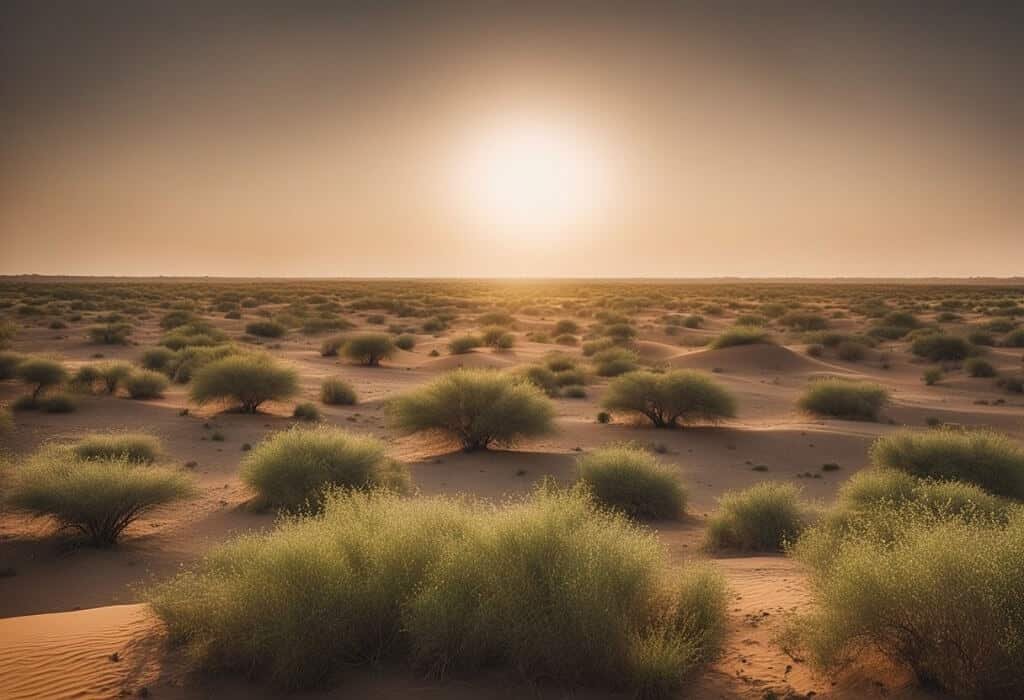
Sudan faces severe challenges from desertification, with over 500,000 square kilometers impacted and 72% of its land arid or semi-arid. To fight this, Sudan has taken significant steps and joined global efforts.
Collaborating with the United Nations Convention to Combat Desertification (UNCCD), Sudan was among the first signatories. The National Drought and Desertification Coordination Unit (NDDCU) oversees efforts to lessen drought impacts and combat desertification.
Projects like BRIDGES, in partnership with Action Against Desertification, support the national Great Green Wall (GGW) initiative. This project aims to restore 2,000 hectares in Eastern Sudan’s Kassala State, near the Eritrea border.
Furthermore, Sudan raises awareness about desertification, a critical issue driven by climate and human activity. Over the past forty years, desertification’s rapid spread has displaced many Sudanese farmers and their families, prompting them to seek more fertile lands.
Frequently Asked Questions (FAQs)
What makes Sudan’s pyramids different from those in Egypt?
Sudan is home to over 200 pyramids, more than double the number in Egypt. The pyramids in Sudan are smaller and steeper than those in Egypt, with a more pointed top. Unlike the pyramids in Egypt, which were built as tombs for pharaohs and their consorts, the Sudanese pyramids were built for royalty, nobles, and priests.
How do the Blue and White Nile Rivers impact Sudan’s climate and agriculture?
Sudan is known as the “breadbasket of the Arab world” due to its fertile soil and abundant Blue and White Nile water supply. The Blue Nile originates in Ethiopia and merges with the White Nile in Khartoum, Sudan’s capital. The rivers provide water for irrigation, which is vital for agriculture. However, the annual flooding of the Nile can also cause devastating damage to crops and infrastructure.
Can you name some indigenous languages of Sudan and their significance?
Sudan is home to over 100 indigenous languages, with Arabic being the official language. Some of the significant indigenous languages include Nubian, Beja, Fur, and Zaghawa. These languages are important for preserving Sudan’s cultural diversity and heritage.
What are some must-visit historical sites in Sudan beyond the pyramids?
Sudan has a rich history and is home to many ancient historical sites, including the ancient city of Meroë, the Royal City of Gebel Barkal, and the Temple of Soleb. These sites offer a glimpse into Sudan’s ancient civilizations and are a must-visit for history enthusiasts.
How does Sudan’s diverse geography affect its biodiversity?
Sudan’s diverse geography, which includes deserts, mountains, and wetlands, has contributed to its rich biodiversity. Sudan is home to over 600 species of birds, 100 species of mammals, and 200 species of reptiles and amphibians. However, Sudan’s biodiversity is under threat due to habitat loss, climate change, and poaching.
What traditional Sudanese dishes should every visitor try?
Sudanese cuisine is influenced by Arab, African, and Indian cuisine. Some traditional Sudanese dishes include Ful medames (mashed fava beans), Kisra (a type of bread), and Bamia (okra stew). Visitors should also try Asida, a porridge-like dish made from sorghum flour and eaten with meat or vegetables.
What wildlife can be found in Sudan’s national parks?
Sudan has several national parks, including Dinder National Park, Radom National Park, and Jebel Elba National Park. Visitors can spot various wildlife, including elephants, giraffes, lions, and cheetahs.
How is Sudan contributing to the Great Green Wall Project?
The Great Green Wall Project is an African-led initiative to combat desertification and improve food security in the Sahel region. Sudan is one of the countries involved in the project and is working towards planting 50 million trees by 2030. The project aims to create a 15-kilometer-wide green belt across Africa, stretching from Senegal to Djibouti.
What are the main challenges facing Sudan today?
Sudan faces several challenges, including political instability, economic crisis, and social unrest. Climate change has also affected the country, leading to droughts, floods, and desertification. Sudan is working towards addressing these challenges and creating a more stable and prosperous future for its people.
How can international communities support Sudanese people?
International communities can support the Sudanese people by providing humanitarian aid, promoting peace and stability, and investing in Sudan’s economy. Supporting education and healthcare initiatives can also help improve the lives of Sudanese people.


